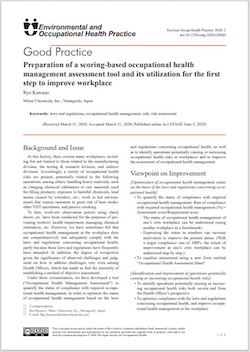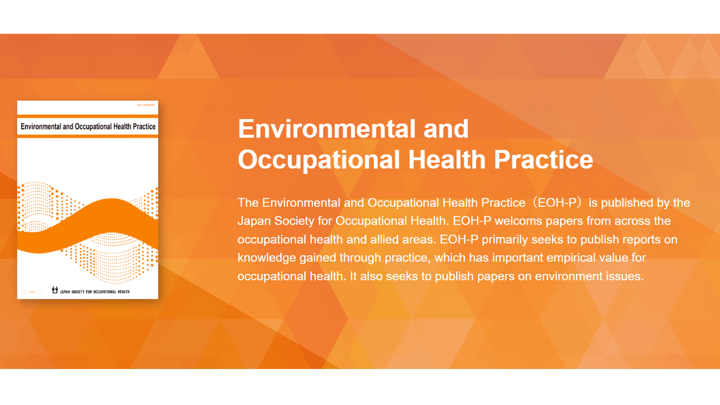#E0023 Preparation of a scoring-based occupational health management assessment tool and its utilization for the first step to improve workplace

Using a Standardized Assessment Worksheet Facilitates Improvements in Safety Rule Compliance
Modern industrial worksites must comply with a broad range of laws and regulations designed to promote workplace health and safety, and ensuring compliance with these laws and regulations is often a challenge. At Mitsui Chemicals, Inc., we rely on worksite observation patrols by inspectors equipped with checklists, but our staff have often expressed concerns that these checklists are not adequate for ensuring thorough regulatory compliance.
We therefore set about creating an assessment tool that allows users to quantify a worksite’s level of compliance with health and safety regulations. Such a tool would facilitate efforts to optimize regulatory compliance and to identify workplace operations contributing to unsafe conditions in the workplace. It would also help workplace safety officers evaluate the effectiveness of various interventions at promoting workplace safety.
We ultimately developed a tool that we named the Occupational Health Management Assessment, which involves quantifying compliance rates. To quantify compliance rates, an assessor assigns binary compliance scores of “0” or “1” for individual regulations and then calculates an overall compliance score. A compliance rate is thus the percentage of the regulations related to a given operation that the worksite complies with. A single health and safety officer can complete the worksheet by interviewing the foreperson responsible for a given operation. We find that applying our tool takes approximately 90 minutes at our site, and we recommend applying it at least annually. A description of the tool appears in an article recently published in Environmental and Occupational Health Practice.
Applying the Occupational Health Management Assessment to operations at our facility has led to pronounced health and safety improvements. In the fiscal year 2007, our factory achieved an overall compliance rate of 80%, but the compliance rate had increased to 99.3% by the fiscal year 2011. We managed to reduce the number of worksites with low compliance rates and increase the number of worksites with high compliance rates. To improve our tool, we plan to add items related to specific high-risk operations. We must also emphasize the importance of noting reasons for a worksite being given a “0” for compliance with a particular regulation.
In conclusion, our Occupational Health Management Assessment facilitates single-worksheet occupational health assessments that promote adherence to applicable workplace health and safety legislation. Annual applications can help ensure improvements in compliance rates, so we encourage other companies to begin using our tool.

Link to the original journal article:
https://www.jstage.jst.go.jp/article/eohp/2/1/2_2020-GPS03/_article
Title of the paper:
Preparation of a scoring-based occupational health management assessment tool and its utilization for the first step to improve workplace
Authors:
Ryo Kawano




